Manta Ray Dive Kona Pictures
The manta ray dive Kona Honu Divers offers is Kona’s most popular dive. People travel from all around the world just to do this one dive. If you’ve heard of the the world famous manta ray dive Kona is the place to do it! Every night the manta rays come onto the reef to feed on tiny zooplankton. They have massive mouths that can scoop up the plankton with ease. We make it even easier for them by putting out bright lights. These lights attach the plankton much like moths. The mantas are highly intelligent and when they see this it’s like a dinner bell and they come right in close enough to to touch! But since so many rays come in close contact with humans it’s very important we keep out distance. Manta rays have a delicate protective layer of muucus surrounding their bodies. When they rub or bump against objects they can lose this protective layer and become subject to infection.
Sections
- Video of the manta ray dive
- How to Photograph Manta Rays
- Manta Picture Gallery
- About Mantas
- Description of the Manta Ray Dive
- Frequently Asked Questions
How to Photograph Manta Rays
Manta Rays are relatively easy to photograph. This is because they will come in quite close to divers while they are resting on the bottom of the ocean. The high powered lights provided make for excellent lighting. Many divers will attempt to use their own lighting. This is unnecessary and will typically lead to poor results. This is because of the backscatter created by lights that are placed near the camera. Set your camera to a medium aperture of around 6 – 12 and a brightness setting of -1.0 or more. This will help to ensure the manta’s white underbelly is not overexposed in relation to the rest of the scene. If you’re setting shutter speed use a minimum of 125/sec due to the speed at which the mantas move through the water 160 – 200/th of a second would be more appropriate to reduce motion blur of the pectoral fins.


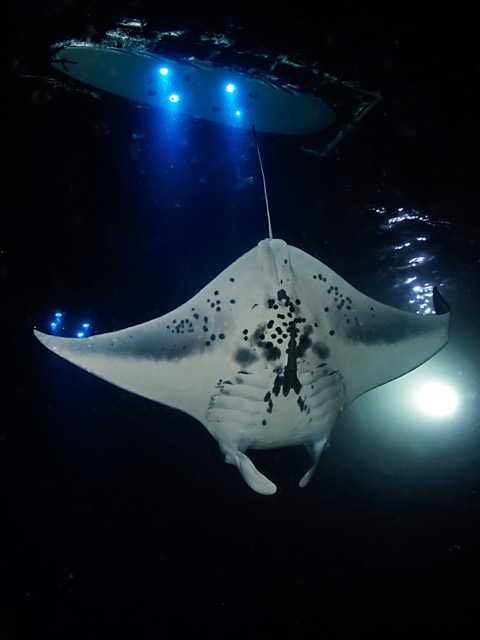
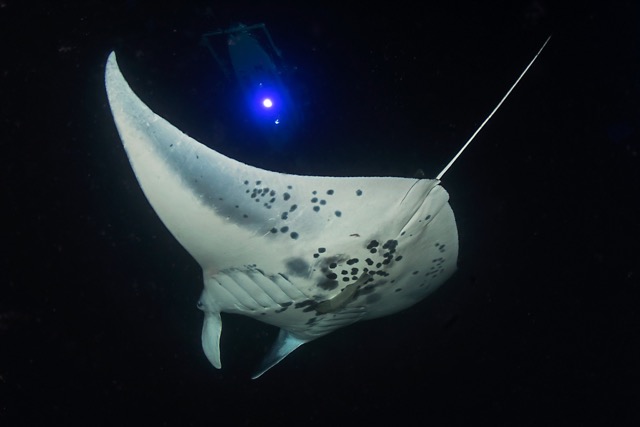
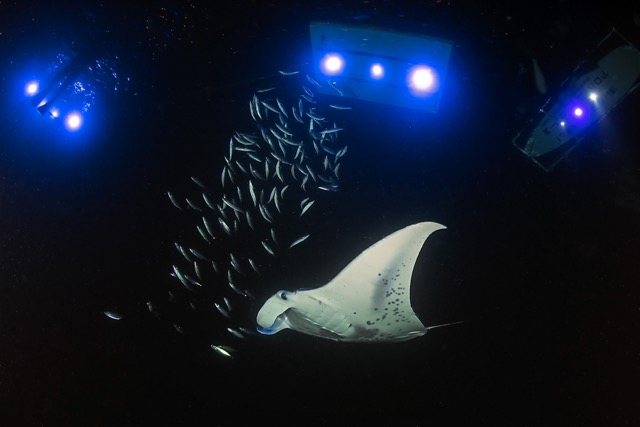
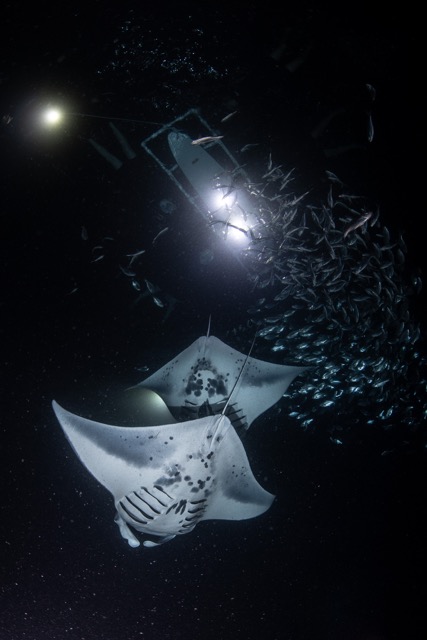
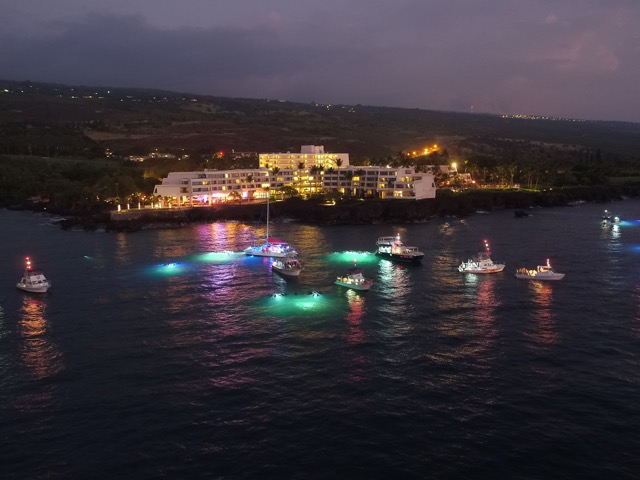
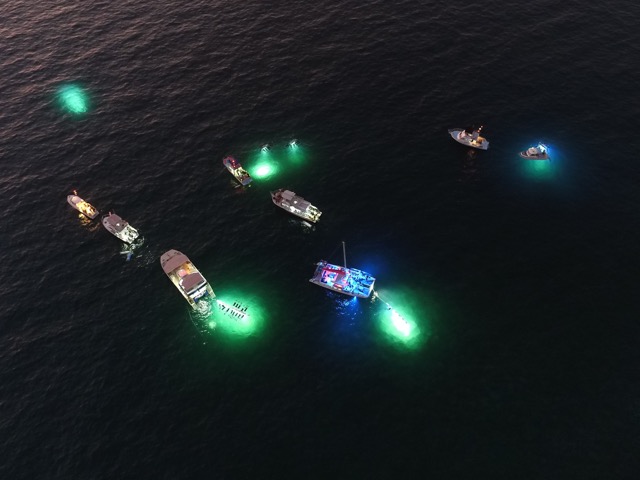

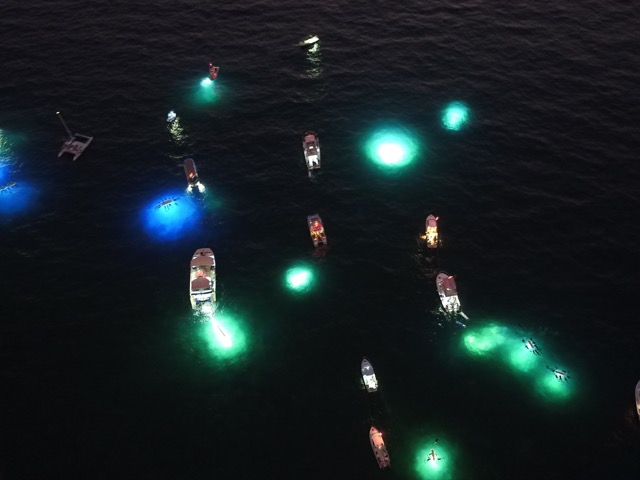
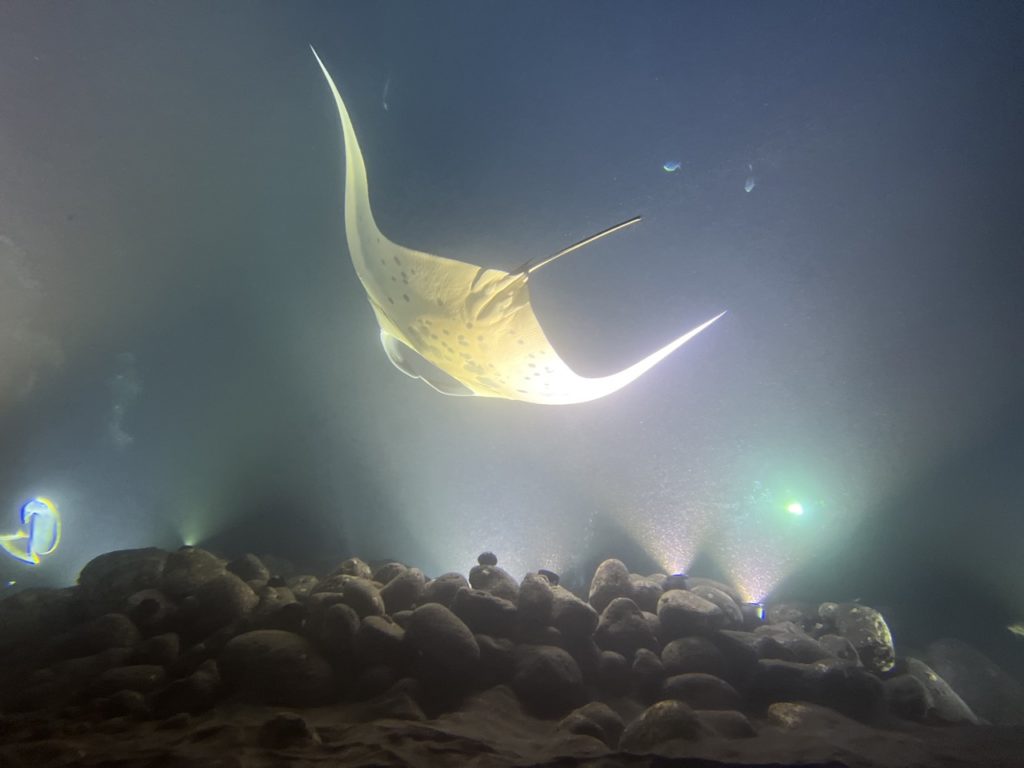
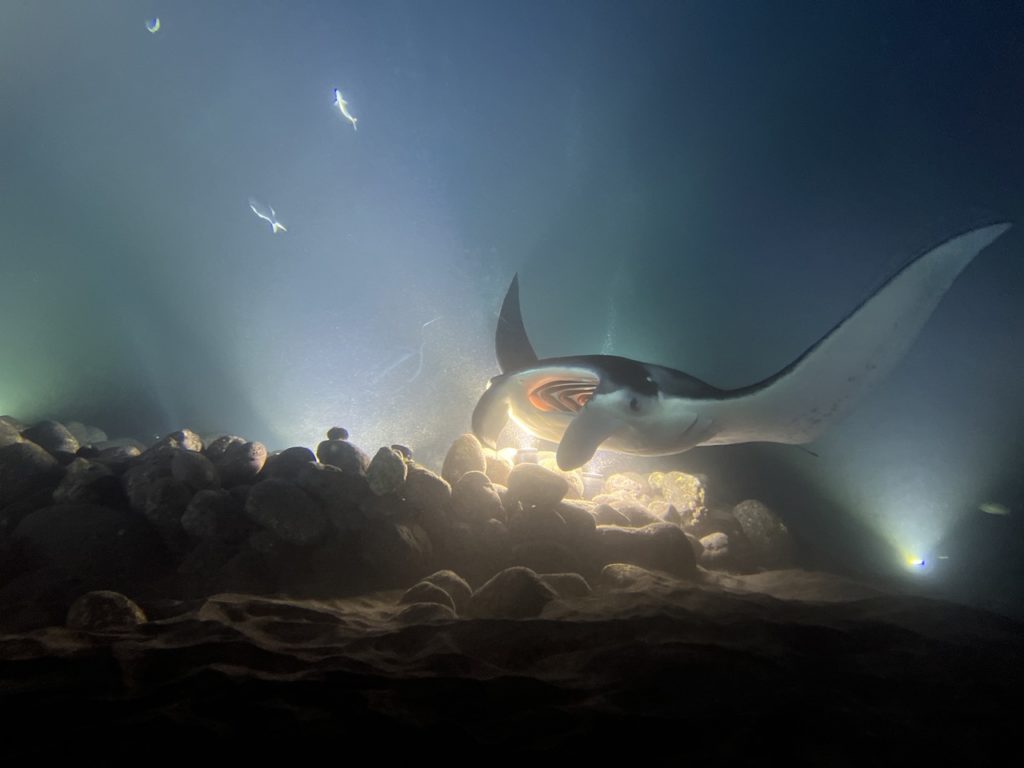
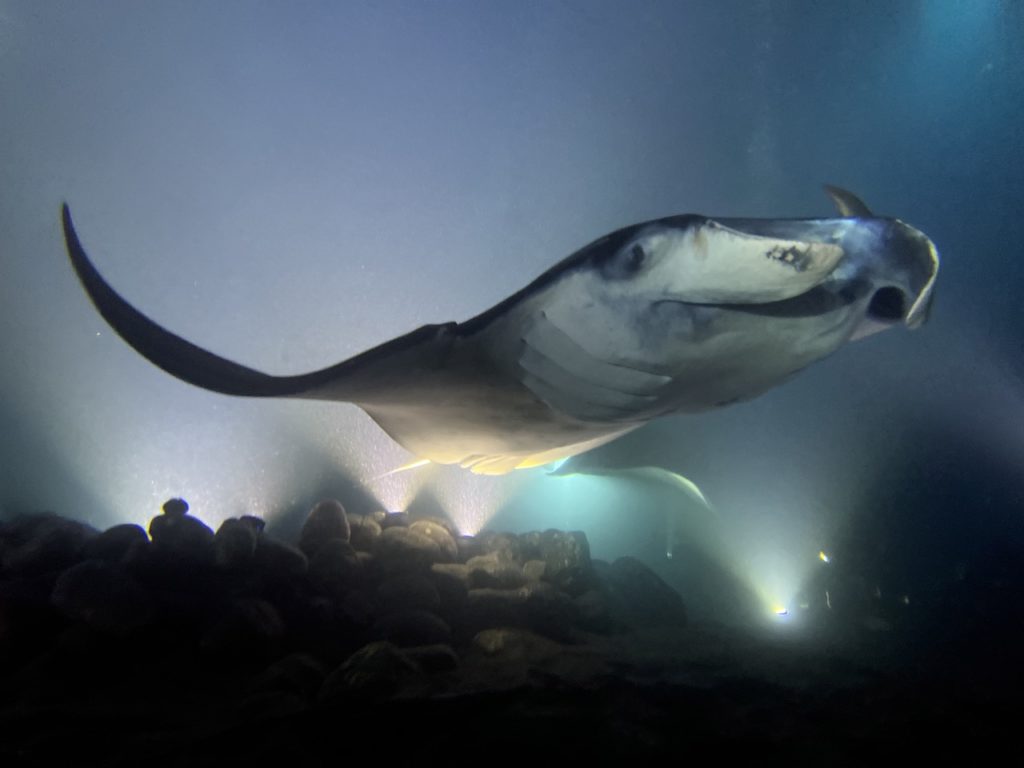
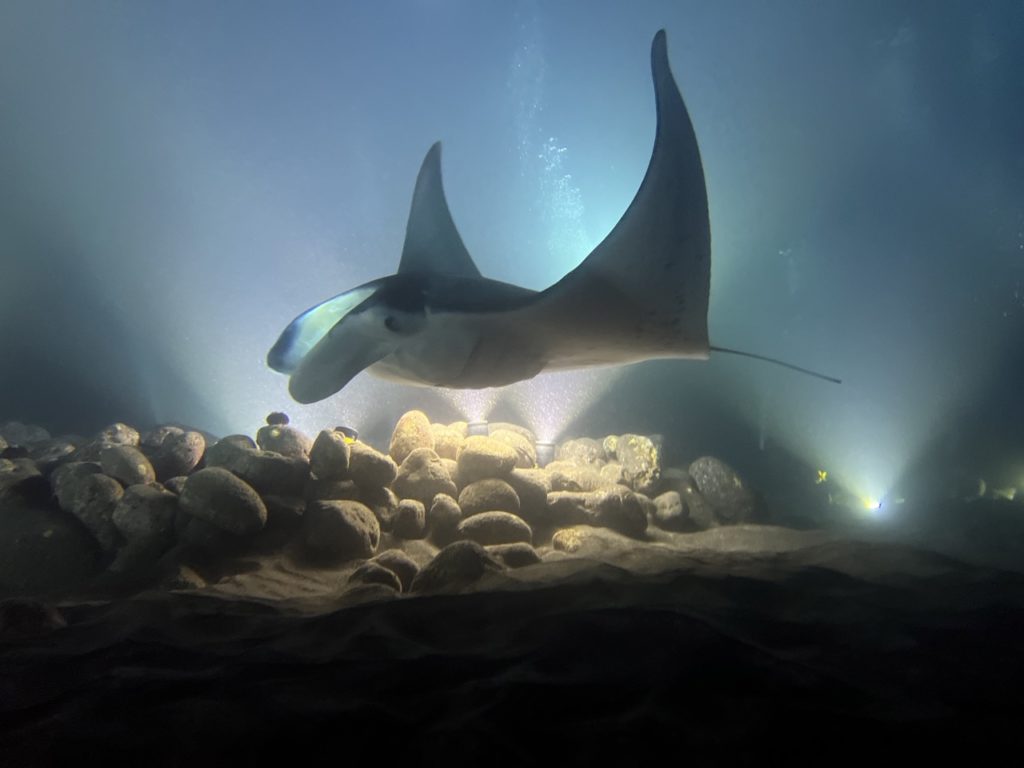

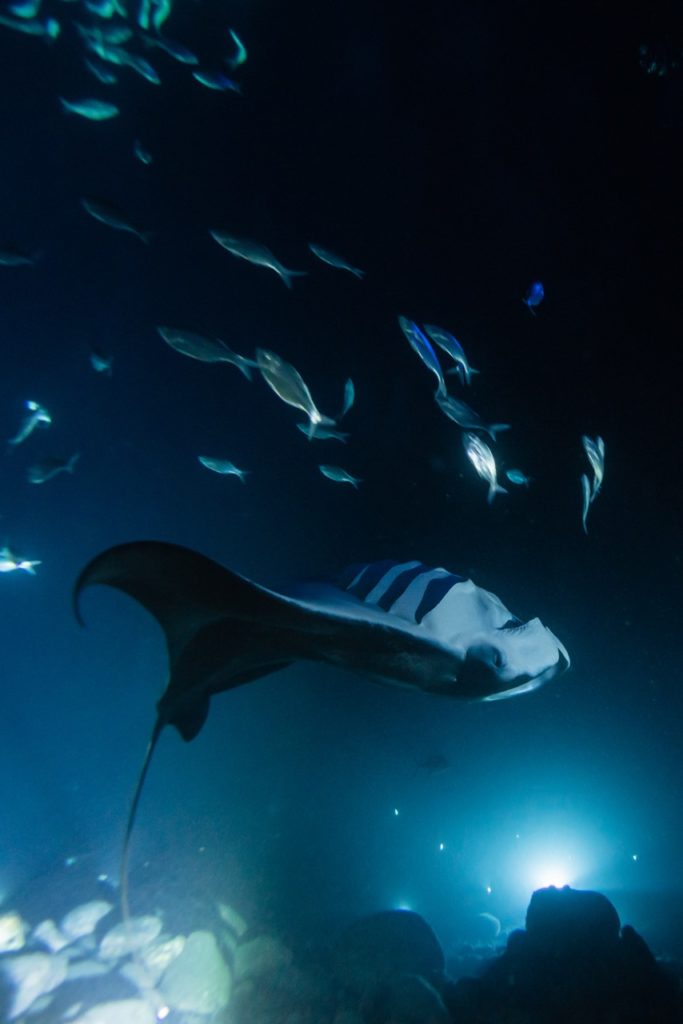
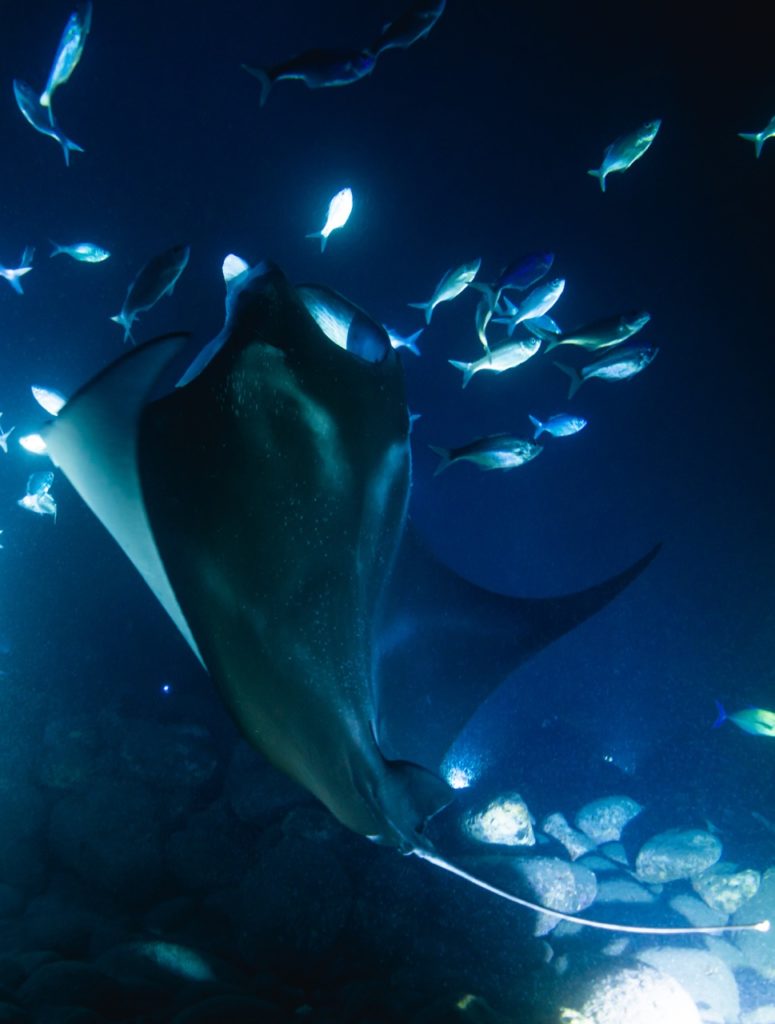
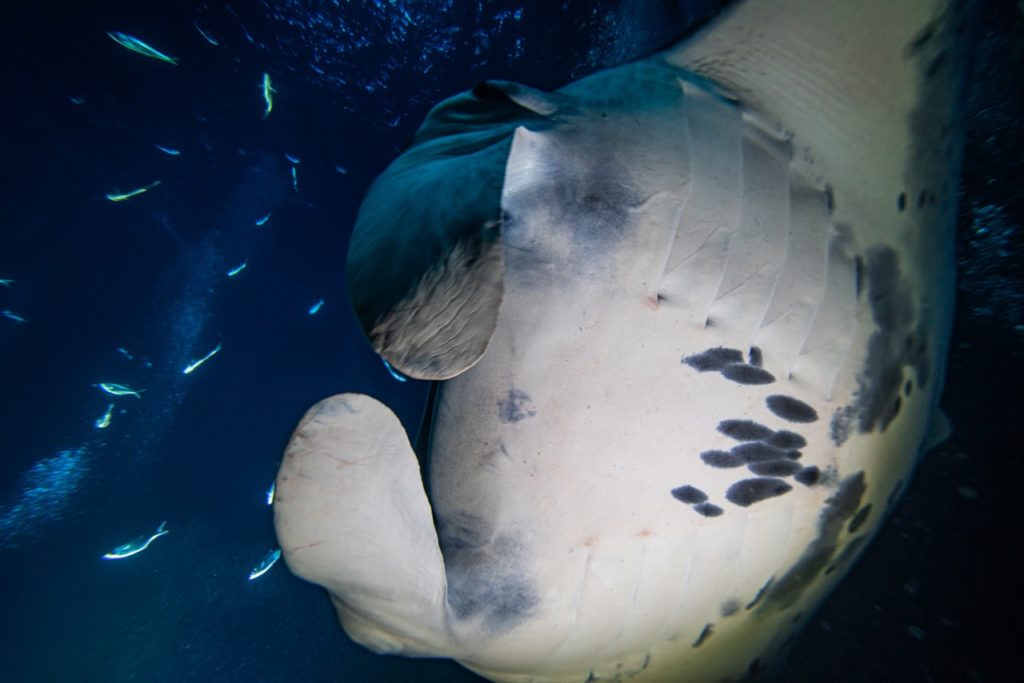

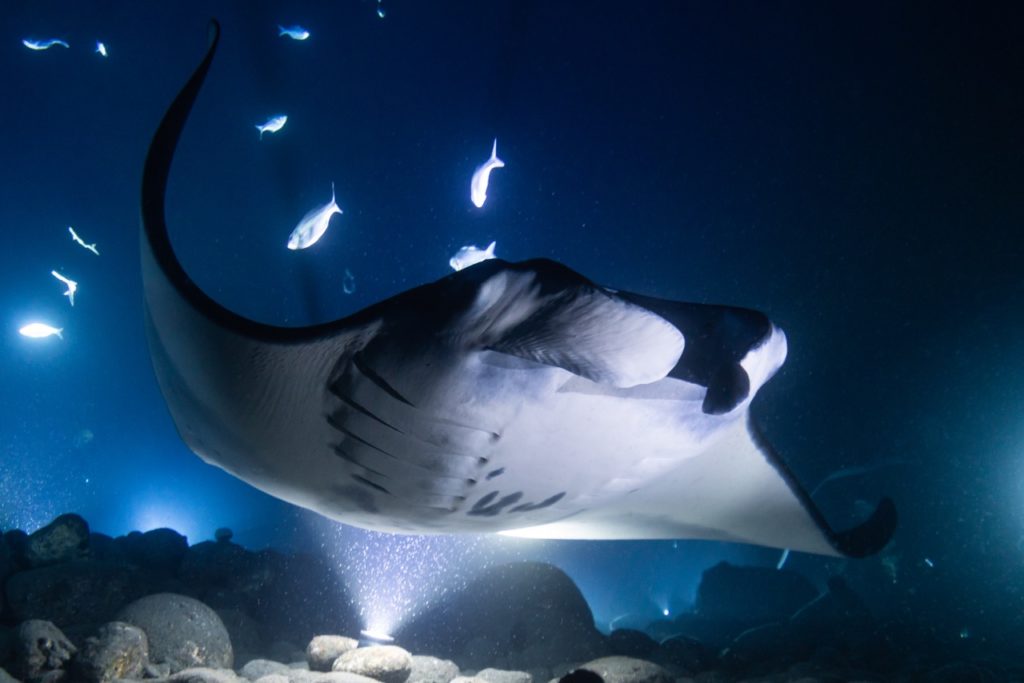
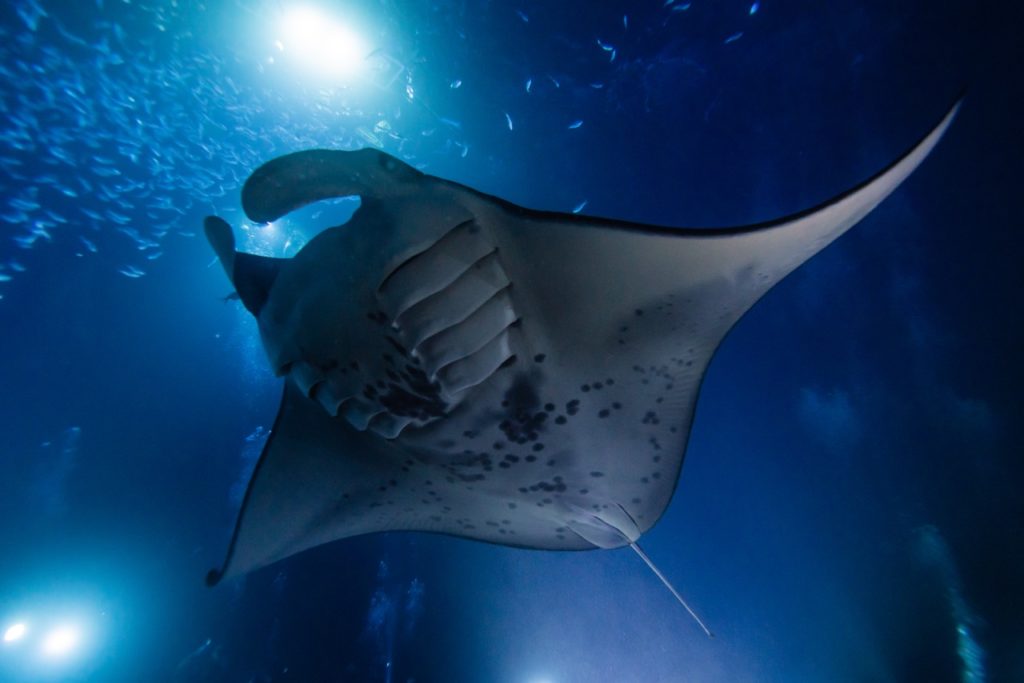
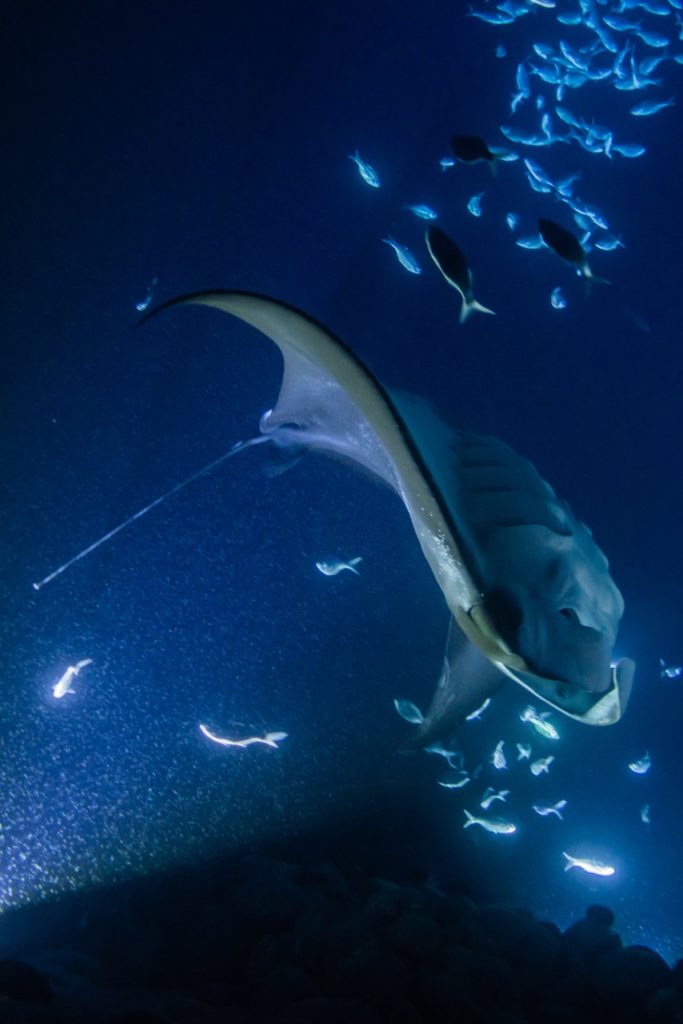
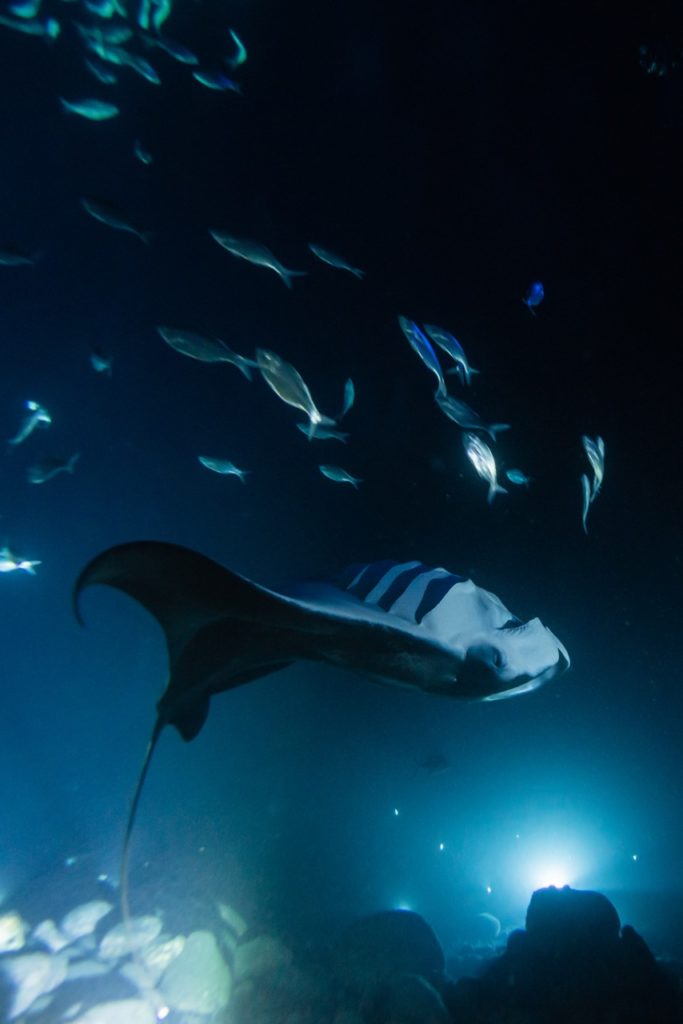
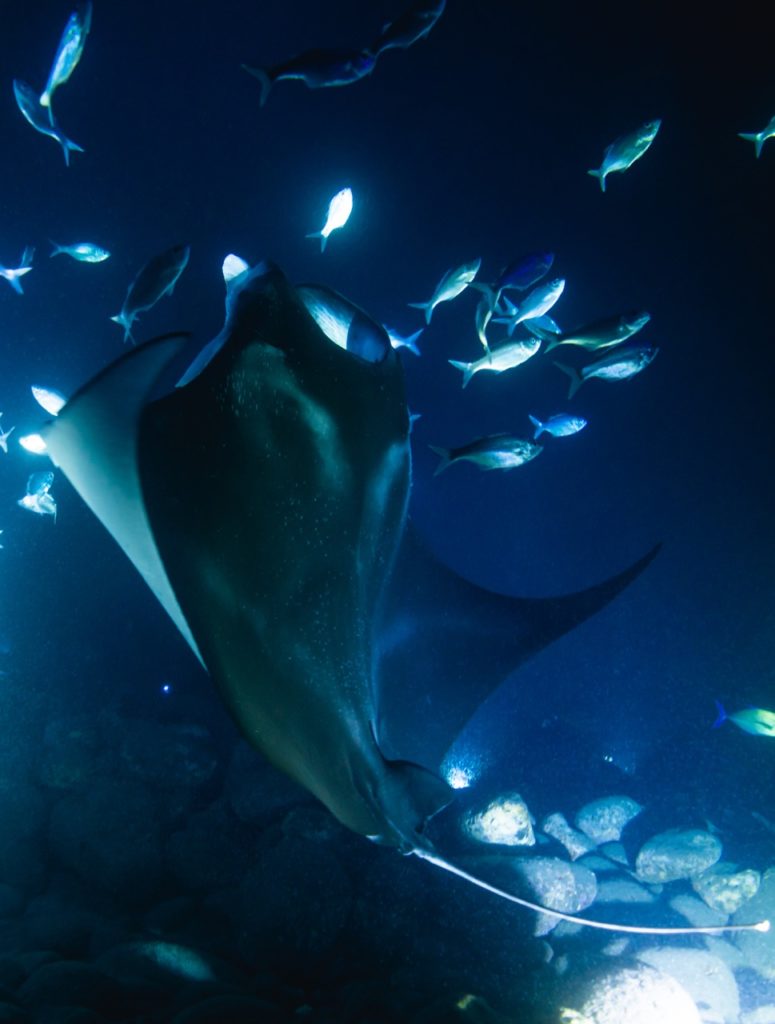
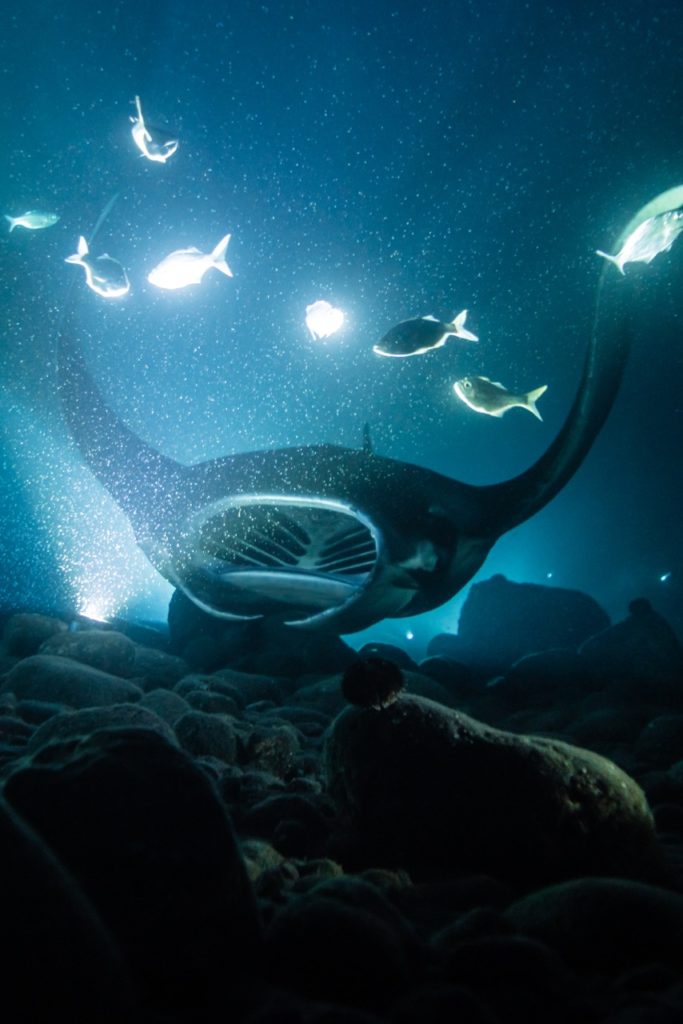
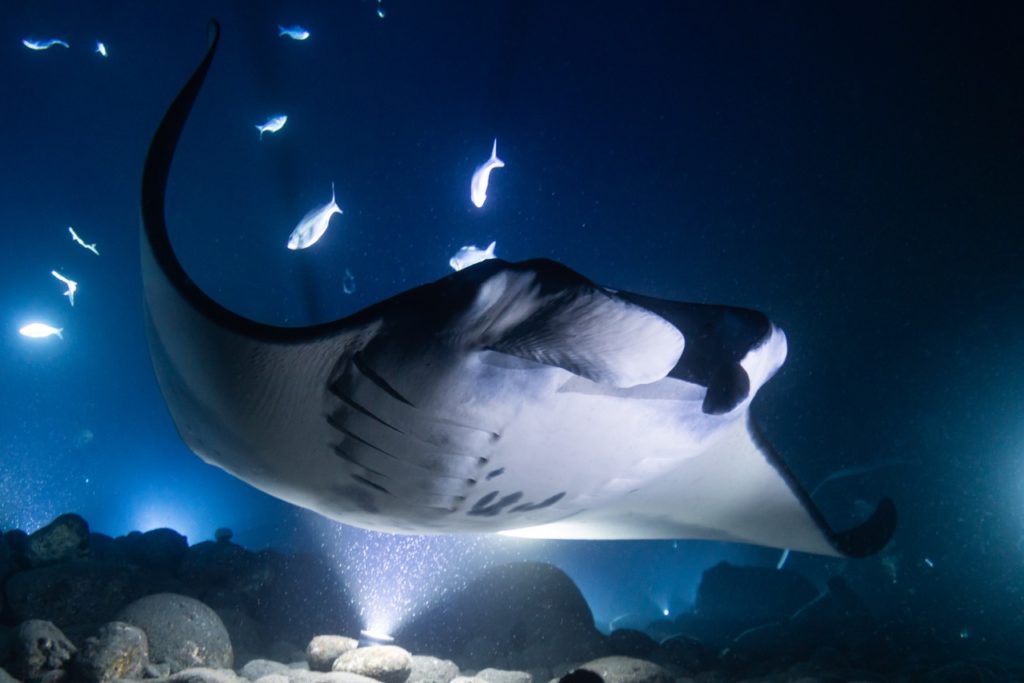

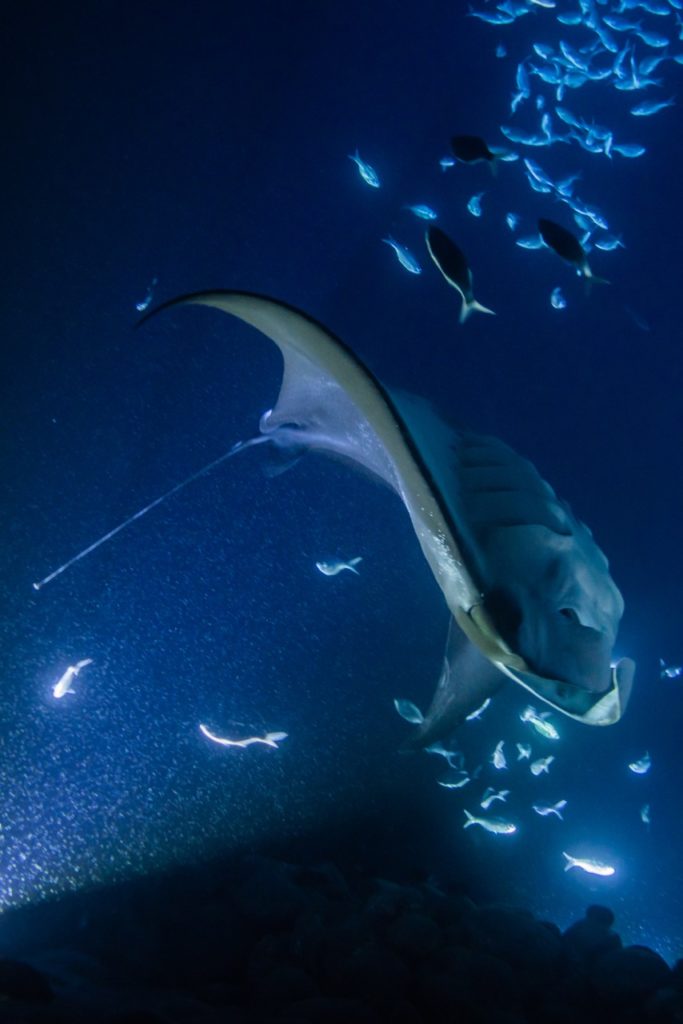
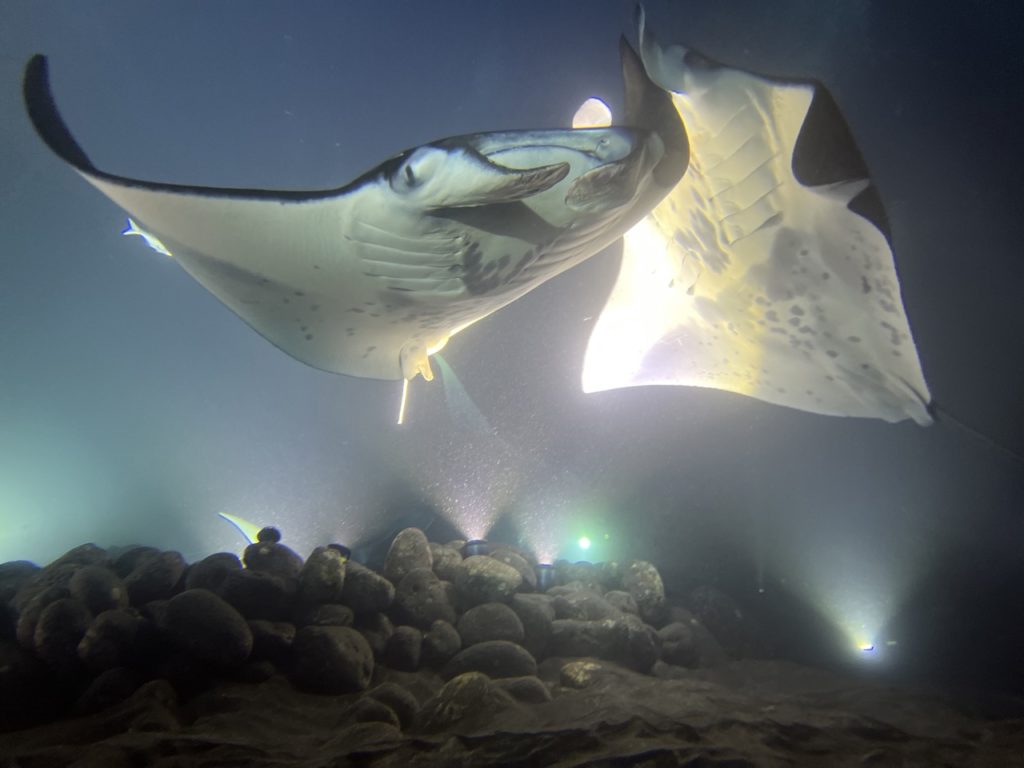
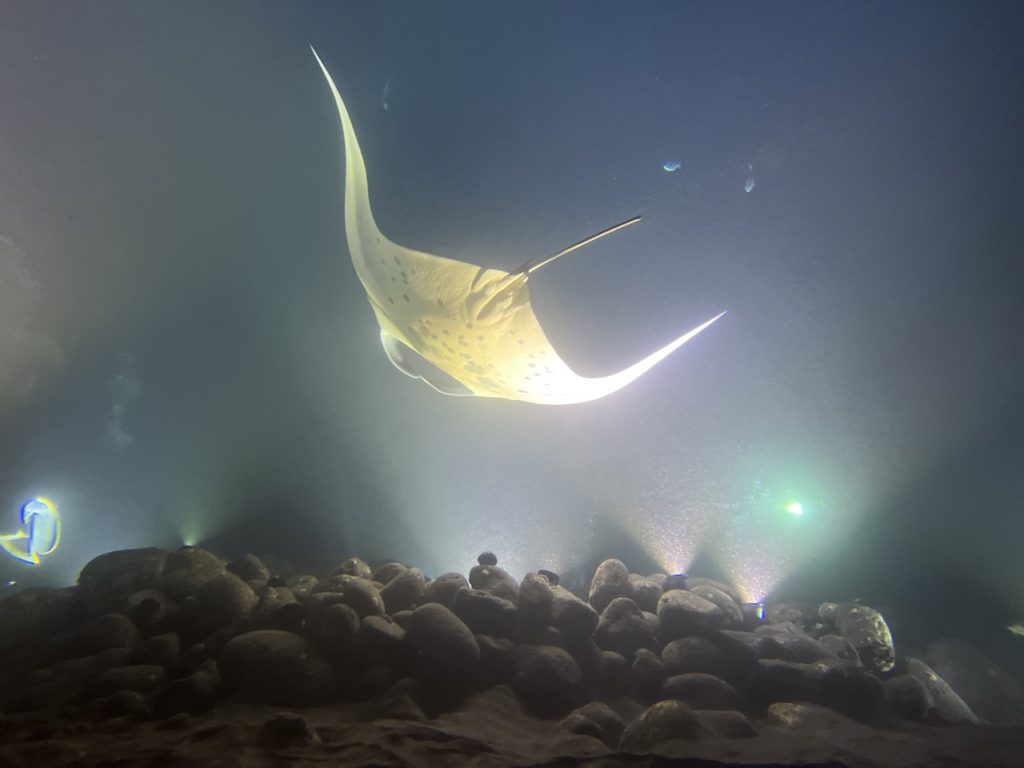
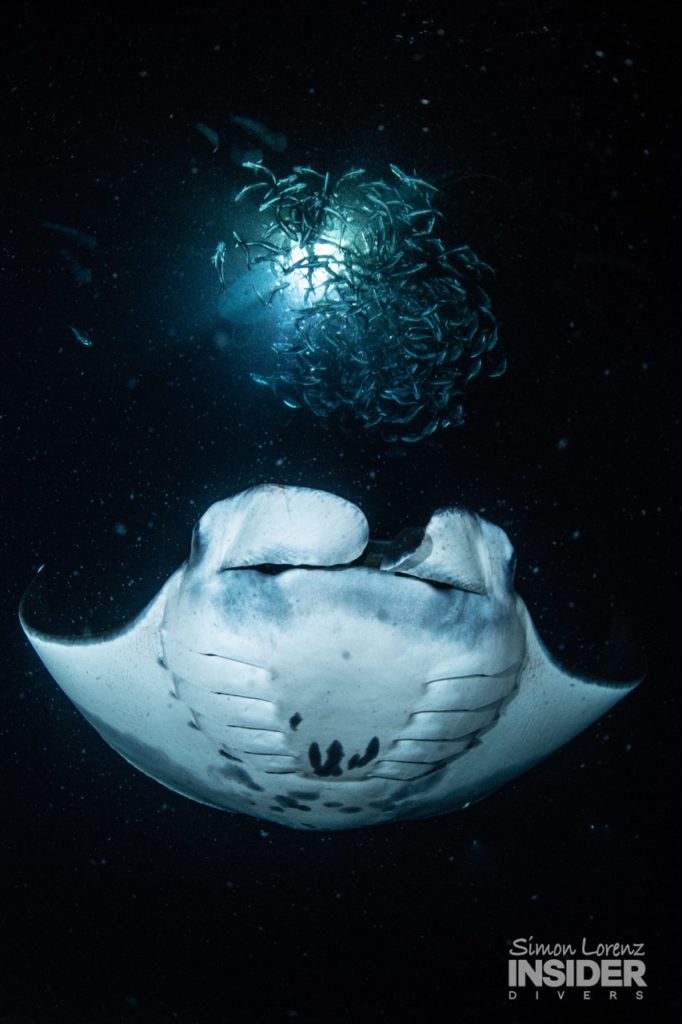
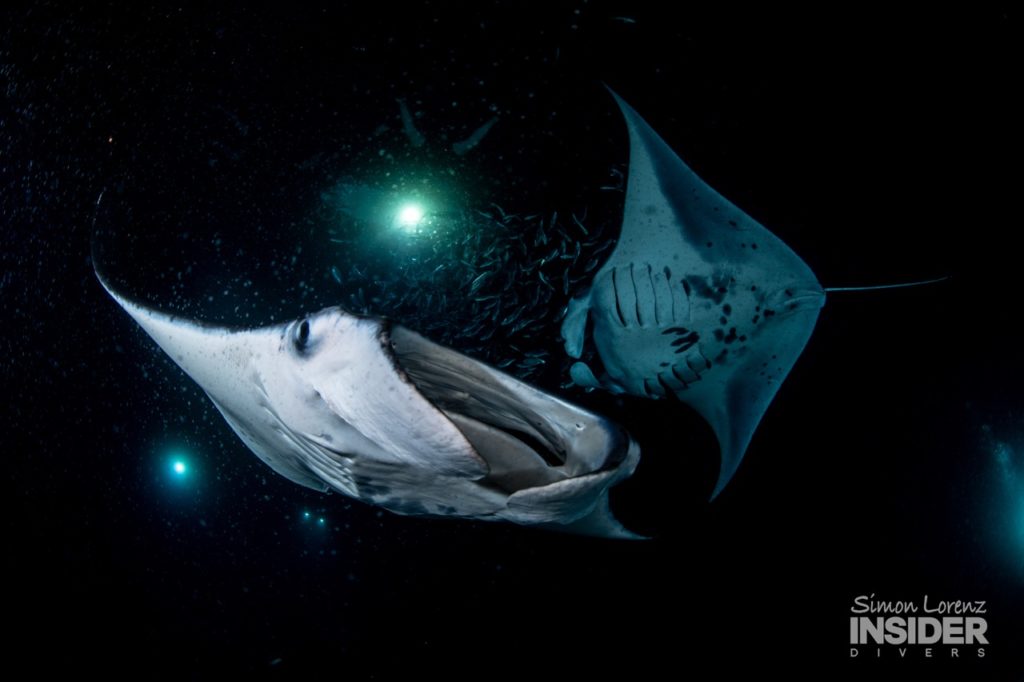
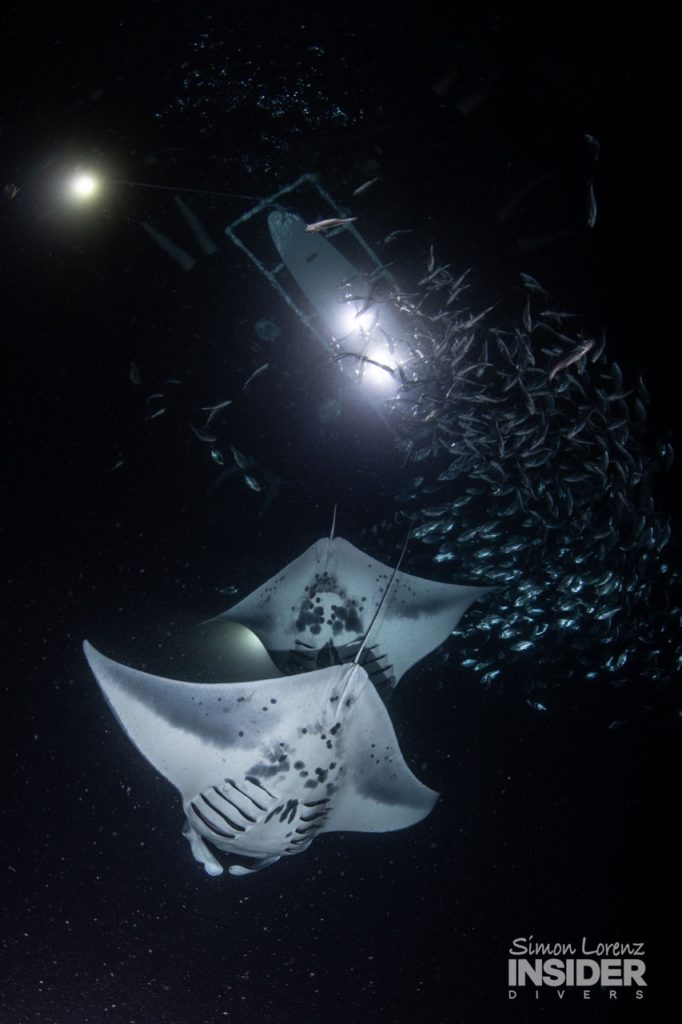
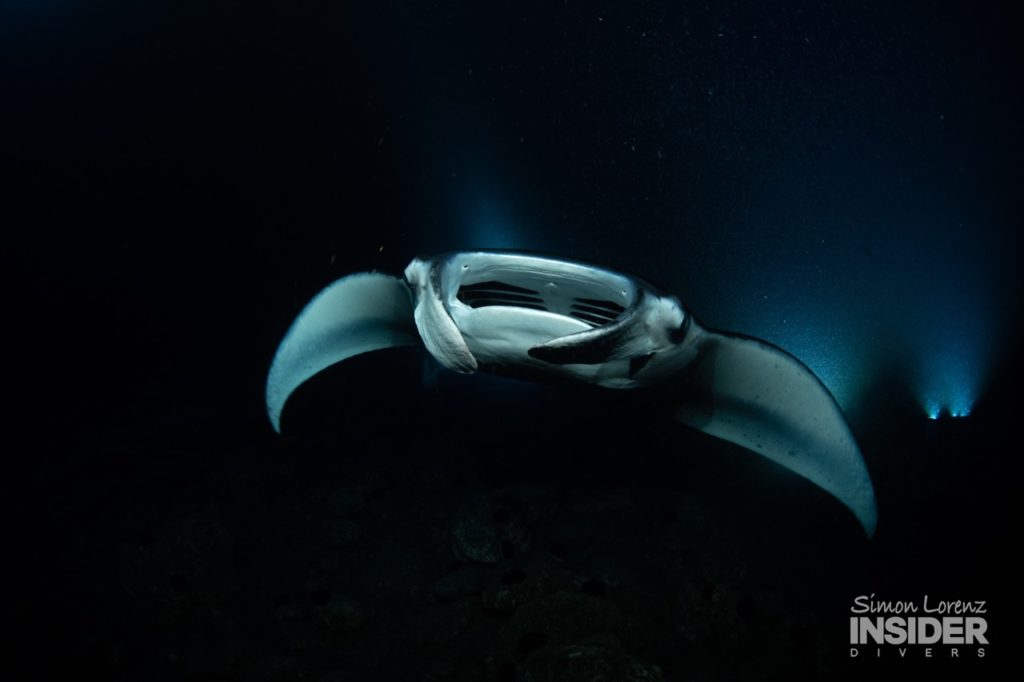

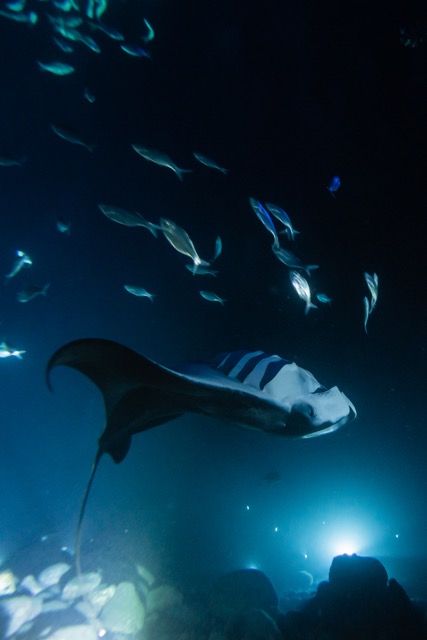

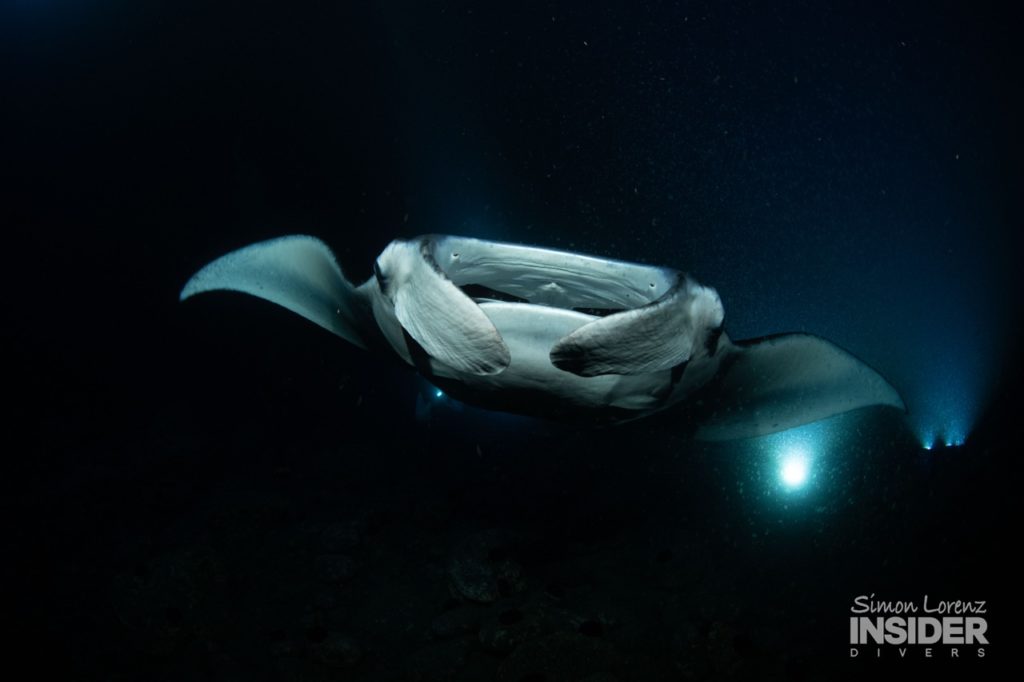
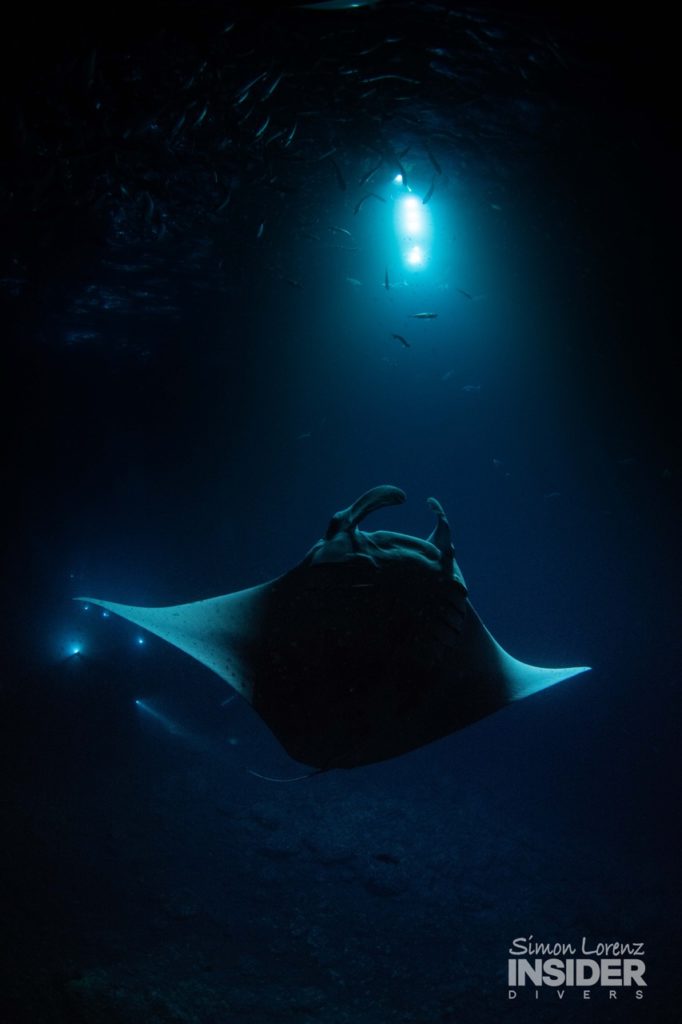
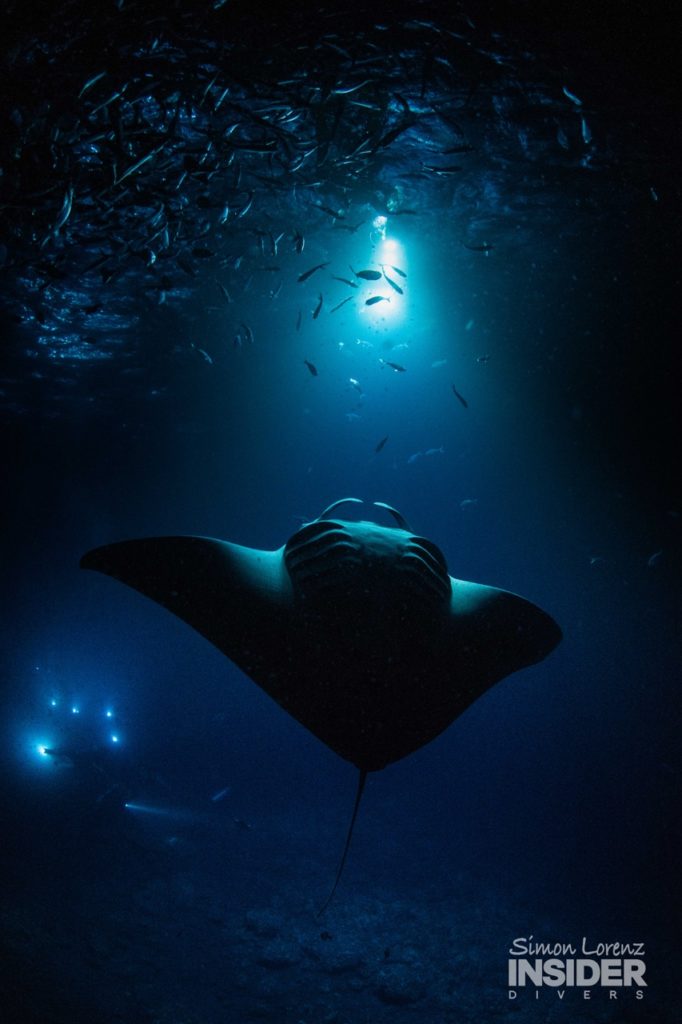
Pictures of the Manta Ray Night Dive in Kona, Hawaii
About Kona’s Manta Rays
We’ve been doing the Manta Ray Night dive Kona for over 20 years now and we’ve learned all of the manta ray’s names. That’s right they are all named. If you discover a young ‘new’ manta ray you get to name it! We can distinguish the mantas from the spot patterns on their undersides. Like freckles each manta has it’s own unique pattern of spots on it’s underside.
Kona’s Manta rays can get pretty big. They can reach up to 12 feet (4 meters) in wingspan (or finspan) and weight up to 1200 pounds or 550 kilograms. When moving through the water they sometime look like large doormats. But their thin profile and large pectoral fins allow them to swim very fast through the water if they want. They can even be spotted jumping completely out of the water!
2 Tank Manta Ray Night Dive
Our 2 tank manta ray night dive tour is a great way to see some of the best diving in Hawaii as well as experience the Manta Ray show. One of the greatest underwater shows in the world.
It begins by meeting at the marina where you will board the Honu One Hawaii’s best dive boat. The captain will brief you and the crew will set up your gear. After boarding the boat will motor towards Garden eel cove. This is the best place to view mantas because they love coming to visit us and out lights here.
Upon arrival your divemaster will brief you on the first reef dive. This will be an easy dive exploring the reef slope and all of the fish and critters nearby. If you’re lucky you may even see a manta or two during the day!
After the dive you will board the boat and have a snack while viewing the sunset. The divemaster will begin their detailed and well-practiced briefing. It’s important to pay attention because the information is important to your enjoying the dive and learning all about the rays and their habits, life-history, and much more. Now it’s time to get geared up.
In the darkness you’ll giant stride off the back of the boat. Once the dive group is gathered at the stern the divers will swim along the reef towards ‘the campfire’. Keep your eyes and flashlight ready to see some critters along the way. Once the group arrives at the campfire you will know it. The light emitted by the campfire is extremely bright putting out nearly 200,000 lumens of light! This is important because as you have learned at the briefing the mantas live the light that brings them their dinner.
Other Night Dives in Kona
In addition to the manta ray dive Kona has other great dives too. One of the more unique dives in Kona is the Blackwater night dive. The blackwater dive was started here in Hawaii and popularized in Kona. Now you may find it in other parts of the world but Kona is still one of the best places to do the Blackwater dive in the world. This is because the Big Island of Hawaii is a giant volcano that is the world’s largest mountain when measured from the bottom of the ocean floor to the highest peak at 13,803ft (4207 meters) above sea level.
Frequently Asked Questions
How Deep is the Kona Manta Ray Night Dive?
The dive site where Kona’s manta rays aggregate ranges from 35 – 55 feet and the manta ray viewing spot is at about 35 feet.
What is the Best Time to see manta rays in Hawaii?
June – October is best for manta ray viewing. The water is warmest and calmest during this time of year. After collecting several years of data from the same site we have found that there is no evidence that manta rays are more abundant during a specific time of year.
What is the Best Time of Year to see manta rays in Hawaii?
While mantas are abundant throughout most of the year the water is more calm and warmest during the summer through fall till mid November.
What is the Best Time of day to see manta rays in Hawaii?
Just after the sun sets the manta rays will come to feed. Manta Rays feed at night on zooplankton that comes out of the reef. Bright lights attract the plankton and the manta rays.
Can you see Manta Rays from the shore in Kona?
It is possible to see manta rays from above the water but there are currently no good viewing areas to see them from shore. If you are a guest at the Outrigger in Keahou you can view them from the balcony there.
The most you will see of a manta at night is a shadow. This is because the back of manta rays is black and they are lit from below. It’s not a great viewing experience and you’d be much better off viewing them from in the water or going to see something else at night like the Mauna Kea stars or lava at Volcanos National Park.
Can Manta Rays Sting You?
No because they do not have stingers.
